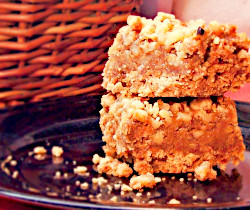|
|
What is Ginger? Zingiber officinale is the scientific name for the spice we call ginger or ginger root. It isn't a true root, but actually a rhizome, an underground stem that grows horizontally beneath the earth. Closely related to ginger are turmeric and cardamon. The word ginger comes from Sanskrit and means horn root.
Nutrients in ginger include amino acids, calcium, essential fatty acids, iron, magnesium, manganese, phosphorus, potassium, selenium, zinc, vitamins B1, B2, B3, B6 and C. There are 18 different phytochemicals in ginger including beta-carotene, capsaicin, curcumin and gingerols.1
How do the Nutrients and Phytochemicals in Ginger Benefit our Bodies?
|
|
|
As an aid to digestion, ginger starts out in the mouth by stimulating the flow of saliva. In the stomach, it promotes bile secretions from the liver and gastric secretions from the stomach. It also has an easing influence on the stomach by supressing gastric contractions. In the intestines, ginger raises muscle tone and increases peristalsis thus promoting a more rapid elimination.2
Ginger is also a great protector of overall health. It has important anti-inflammatory properties. Inflammation can contribute to several serious health conditions including heart disease and arthritis. The anti-inflammatory action is accomplished by reducing the production of leukotriene and prostaglandin in the body. It also inhibits thromboxane production which can be helpful for migraine sufferers.3 Muscle inflammation can also be eased with ginger. A study of athletes given ginger experienced a 25% reduction of exercise-induced muscle pain.4
Ginger further protects the circulatory system with its anti-lipid properties. In clinical studies, rats given ginger had a reduced degree of atherosclerosis.5 Another study showed favorable results in reducing the symptoms of a cold by combating the rhinovirus.6 More anti-microbrial properties are indicated with results showing a reduction in the number of Helicobacter pylor, the bacteria responsible for gastric ulcers, in persons who had been given ginger.7
Can Ginger Prevent Motion Sickness and Ease Nausea?
Yes, say participants in a clinical trial conducted on Zintona®, a standardized dried ginger-root powder from Dalidar Pharma Ltd. Zintona is available over the counter in serveral European countries. In a comparison study of Zintona and dimenhydrate, commonly know as Dramamine, 60 cruise ship passengers with a history of motion sickness were given either the prescription medication or the ginger-root compound. An equal relief from symptoms was reported.8
Results from studies in Australia recommend ginger for patients on chemotherapy who are experiencing nausea and/or vomiting.9 There is also a possiblity that ginger has anti-cancer properties. Test results showing a reduction of colon inflammation in subjects taking ginger suggest that individuals who are at a high risk for colorectal cancer should consume ginger as a preventative measure.10
Adding Ginger to Your Diet
Find ginger in the produce department of your grocery store, in natural food stores and Asian markets. Young ginger will have a milder flavor than mature roots. Look for pink tips and a paper thin skin that rubs off easily.
My favorite way to enjoy ginger is in a hot cup of tea. Ginger be candied, baked into desserts or cooked into to stir fries and main dishes. It can also be added to a marinade sauce for tender and flavorful meats. Ginger is very versatile and blends well with other flavors such as citrus or pepper. Try a dash of ginger in some of your favorite dishes and enjoy the extra flavor and added health benefits.
Honey Ginger Pork and Pasta

From kitchen to table in 1 1/2 hours (includes time to marinade). Serves 4
|
8 sprigs fresh cilantro
2 teaspoons fresh ginger, grated
3/4 cup rice wine vinegar
3/4 cup honey
4 boneless pork loin chops
1 teaspoon sesame oil
4 cloves garlic
4 cups water
2 tablespoons cornstarch
1 cup frozen peas
6 ounces pasta
|
Directions
- Chop cilantro and place in a container with a tight lid. Add grated ginger, rice wine vinegar and honey. Stir to mix. Put pork chops into container, seal and shake vigorously to evenly coat marinade over meat. Place in refrigerator and allow to marinade for at least one hour. Shake and turn two or three times during marinading to keep all the meat covered.
- Heat water in a large pot on boiling for pasta.
- Pour sesame oil into a skillet and turn heat on to medium. Remove pork chops from marinade, but reserve liquid. Brown pork chops in hot oil until no longer pink in the middle, turning halfway during cooking time.
- While meat browns, crush and mince garlic. Remove meat from skillet and set aside, covered. Brown garlic in meat skillet and then add liquid from marinade.
- Dissolve cornstarch in water and add to skillet, turn heat up to medium-high, cook and stir for two minutes. Add frozen vegetables and reduce heat to medium-low.
- Cook pasta in boiling water according to package instructions. Drain and rinse.
- Turn heat under skillet back up to medium high and cook while stirring until sauce is thickened. Pour over pasta and serve with pork loin chops.
1Balch, Prescription for Nutritional Healing 5th Edition, Penguin Group 2010
2Premila, Ayurvedic Herbs - A Clinical Guide to the Healing Plants of Traditional Indian Medicine, 2006
3Thomson PDR for Herbal Medicines 4th Edition, 2007
4Sherman, The Journal of Chinese Medicine, Feb 2011, p.74
5Thomson PDR for Herbal Medicines 4th Edition, 2007
6Thomson PDR for Herbal Medicines 4th Edition, 2007
7Fundukian, Gale Encyclopedia of Alternative Medicine 3rd Edition, 2009
8Barrett The Handbook of Clincally Tested Herbal Remedies, Hawthorne Press, 2004
9 Alparslan, et al, Journal of Australian Tradtional Medicine Society, Mar 2012, p.15
10 Finney-Brown Oncology, Dec 2011 p.1419
|



